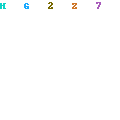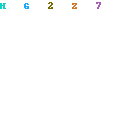What do you felt when looking in this picture ?
This is a gang-bang and any woman that sees those shoes instead of that message deserves those shoes.(Alex Leo, 2008)
In advertising, it is easy to get a man's attention by using women's bodies and associate getting the woman if he buys the product. (Richard F. Taflinger, PhD, 1996) We all know the purpose of advertising is to convince people that products are of use to them in one way or another, it is clear that sex is a strong appeal to use in advertising. However, advertising cannot take advantage of a woman's instinctive sexual desire, because advertising job is not to build for the future, it is to sell a product now! (Richard F. Taflinger, PhD, 1996)
Source: shamelessmag.com
Two balls trying to drive out the meaning of thursday Ladies' night. Do you get it ?
In the article of ‘Time to kick sexism out of advertising’ (guardian.co.uk, 2010) stated football has dealt with racism on the terraces, but still ignores sexism among the players. Beatrix Campbell (2010) mentioned racism was once an ingredient of popular culture, too: racism and sexism were the vernacular of sport talks as well as she said footballers' ridiculous and indefensible earnings apparently generate a sense of masculine entitlement. Sexism may not yet be recognized for what it is, but something about masculine attitudes to morality is shifting on the terraces. (Beatrix Campbell, 2010)
Source: womensmediacenter.com
Why is the Times running half page of a woman's legs lying out from a shopping bag?
Why fashion ad not a fashion ad? (womensmediacenter.com, 2008)
This is Sexism in Advertising.
In the article ‘Boys, Girls – this is not a competition. Sexist ads are bad for everyone.’ (Dabitch, 2008) clearly argued that sexism in advertising is not good for everyone. Dabitch (2008) stated there are men being portrayed as super hunks with shiny oily six-packs in advertising as well, and young boys are becoming anorexic, dependent on steroids and blowing their weekly allowance on back.
Caused people felt like watching child porn because this ads offers a young woman whose own a children face having a sexually posture taking picture. (Alex Leo, 2008)
The article of Alex Leo (2008) ‘Five Sexist Trends the Advertising World Just Can’t shake’ stated the fact that these trends are so widespread is not the fault of the advertising world and these people are paid to appeal to our kids, they are often self-aware in their tendency to make the world harder for women, that's the life they've chosen.
References
Kathy, 2008, ‘NY Times Takes on Sexism in Advertising…Or Not.’ The Women’s Media Center, viewed at 14 November 2010, achieved from
Dabitch, 2008, ‘, Girls – this is not a competition. Sexist ads are bad for everyone.’ viewed at 14 November 2010, achieved from
Alex Leo, 2008, ‘Five Sexist Trends the Advertising World Just Can’t shake’, viewed at 14 November 2010, achieved from
http://www.huffingtonpost.com/alex-leo/five-trends-the-advertisi_b_149354.html
Richard F. Taflinger, PhD, 1996, ‘Taking Advantage: You and Me, Babe: Sex and Advertising’, viewed at 14 November 2010, achieved from
< http://www.wsu.edu:8080/~taflinge/sex.html>




















